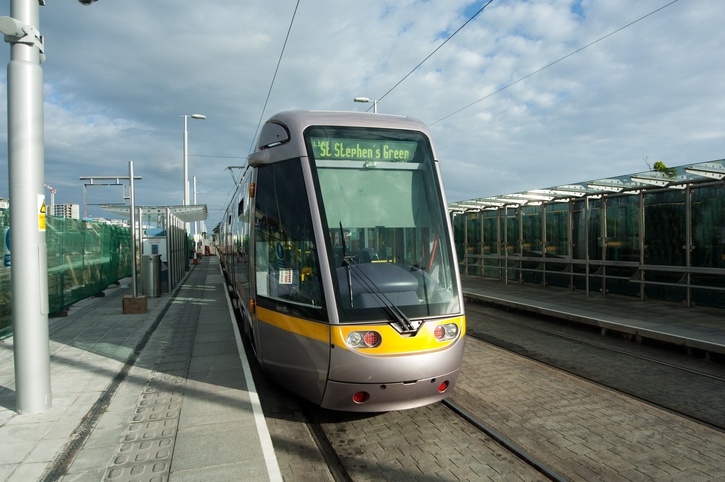Tram Systems
Reading time: 4 minutes.

After a few decades on the transport scrapheap, trams are coming back into vogue again thanks to the increasing levels of congestion in our cities and the need for an option mid-way between buses and trains. Quite a few schemes have come into being over the last decade or two and more are in the pipeline. One of these has become something of a long-running saga that I’d like to see brought to a good end sooner rather than later: Edinburgh’s project. Let’s hope that it doesn’t forestall others because many are successful ventures. There are few listed here after all and more may be needed.
In their early days, trams were horse-drawn affairs and one still runs along Douglas’ promenade on the Isle of Man every summer. Most though are electrically powered, so they are cleaner than buses when it comes to their locale. A two-car single-decker tram can carry more passengers than a bus too, and they can run along city streets, unlike a train and very handy for getting to and from shopping areas. That’s not to say that they’re not found running along former railway lines because some do. However, the lesser weight involved means that any construction needs not cost as much as it would with a traditional railway or even a lighter version of one like the Docklands Light Railway in London or the Metro serving Newcastle, Gateshead and Sunderland.
All in all, trams now look like a flexible cost-effective transport option after years of buses being seen as being better value for money. While trams once were blamed for causing traffic congestion in Dublin, it seems that they offer a way of not being retarded by the number of vehicles on a road like buses are. Until that reality dawned on us, it once seemed that buses were a more sensible option than the outlay needed to set up and maintain a tram system with its vehicles and light railway infrastructure. So long as other road users don’t crash into them (it isn’t for nothing that learner drivers are told that trams are unable to change their direction; that doesn’t stop me wondering how many take notice of that fact), it seems that trams are better at getting through rush hour traffic than buses and, after a hiatus, tram travel really is back, and it should never have gone away in the first place.
London had its trams too with ones running around Croydon until 1951 when the system was shut down to make more space for cars and buses. The current one returned in 2000 and has four routes extending around Croydon and Wimbledon with more potentially in the pipeline.
When we Irish set our minds on doing something, we just get on with the job and the return of trams to Dublin’s streets in 2004 was an example of this; before that, the last ones ran in 1959. They look modern and are operated well by Veolia/Transdev under contract to the Irish government. There is even a plan to link up two separate lines (one from St. Stephen’s Green to Sandyford and another from Tallaght to Connolly train station and the O2 Arena, formerly the Point Depot) now, something that should have been done in the first place. Due to the economic situation, more adventurous plans need to be postponed though some did reach the drawing board.
This system is operated between Wolverhampton and Birmingham by National Express, the main bus operator in England’s West Midlands, on behalf of local transport authority Centro, who owns it. It started working in 1999 and an extension to Stourbridge is being considered.
This is a tram system of which I have better knowledge since I live not that far away from Manchester. It started operating in 1992 and is council-owned with a private operator running the network. It now is RATP after terms with Stagecoach and Serco. There are five lines in existence and progress is being made towards the total replacement of the first generation of trams and new lines are planned too. The current lines have termini at Altrincham, Bury, Chorlton-cum-Hardy, Eccles and Oldham with the route between Piccadilly and Victoria train stations being a busy and useful thoroughfare. It is a good example of the place of light rail in modern city public transportation.
This is one of the newer tram systems, starting as it did in 2004. So far, there is just one line with more being planned. It, too, has its predecessors though the middle of the twentieth century saw a move away from trams altogether until the dawn of the one in which we live now.
1985 saw a parliamentary act passed that set in train the re-establishment of a tram network in Sheffield; its predecessor lasted until 1960. That work was completed in 1994/5 and the network passed from council ownership to Stagecoach in 1997. There are three lines and ticketing is shared with Stagecoach’s bus operations in the city.
Learn More
Recent Musings
From St. Helier to Elsewhere by Bus and Ferry
Bus service changes due to Whaley Railway Bridge Closure